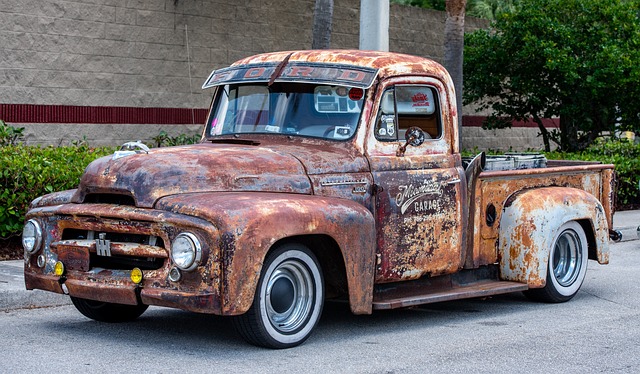Looking to register your car in California? Navigating the process can seem daunting, but with the right guide, you’ll be on the road in no time. This comprehensive article breaks down the California vehicle registration process step-by-step. From understanding essential requirements and gathering vital documents to crucial VIN verification and final submission, we’ve got you covered. Learn what post-registration steps to take and important considerations to keep your vehicle legally registered.
- Understanding the California Vehicle Registration Process
- Gathering Required Documents for Car Registration
- VIN Verification: A Crucial Step in the Registration Process
- Submitting Your Application and Paying Fees
- Post-Registration Steps and Important Considerations
Understanding the California Vehicle Registration Process

Understanding the California Vehicle Registration Process
In California, registering a car involves several steps designed to ensure vehicle safety and compliance with state regulations. The process begins with verifying the vehicle’s unique identification number (VIN). This crucial step, known as VIN verification, is essential to confirm that your vehicle meets all necessary safety standards and emissions requirements. It’s worth noting that many Californians opt for a convenient mobile VIN inspection or mobile VIN verifier service to streamline this initial phase.
Once the VIN has been verified, you’ll need to gather essential documents such as proof of ownership, insurance, and identification. With these in hand, you can visit a California Department of Motor Vehicles (DMV) office or utilize their online services for registration. The DMV will process your application, conduct an inspection of your vehicle, and issue a registration certificate, which is typically valid for several years.
Gathering Required Documents for Car Registration

Before you start the registration process, it’s crucial to gather all the essential documents required by the California Department of Motor Vehicles (DMV). This includes your vehicle’s Registration Application (Form DVF 140), which can be obtained online or in person. Additionally, you’ll need proof of insurance, a valid driver’s license, and the vehicle’s title. The Vehicle Identification Number (VIN) is another critical piece; ensure it’s accurately listed on all documents. For convenience, many individuals opt for a mobile VIN inspection or use a mobile VIN verifier to quickly and accurately record this unique identifier. This step is essential during the registration process as the DMV will verify the VIN to ensure its authenticity and check for any potential issues.
Furthermore, if you’re purchasing a used car, you might need additional paperwork, such as the previous owner’s signature or proof of sale. It’s always recommended to check with your local DMV office for specific requirements, as certain documents may vary based on individual circumstances. Properly gathering and organizing these documents will make the registration process smoother and faster.
VIN Verification: A Crucial Step in the Registration Process

When registering your car in California, VIN verification is a crucial step that cannot be overlooked. The Vehicle Identification Number (VIN) is a unique code imprinted on every vehicle, serving as its fingerprint. It contains vital information about the car’s make, model, year, and production details. To register your vehicle, you’ll need to confirm these details through a process known as VIN verification.
This step ensures that the car you’re presenting for registration is genuine and matches the documentation provided. Many California DMV locations offer on-site VIN inspection services, while some prefer that you use a mobile vin verifier. This flexibility makes it easier for vehicle owners to complete the registration process efficiently, ensuring your car’s record is accurately updated in the state’s database.
Submitting Your Application and Paying Fees

After completing your application for car registration, it’s time to submit it along with the required documents and fees. California’s Department of Motor Vehicles (DMV) will review your application, which includes verifying your vehicle’s unique identifier, known as the Vehicle Identification Number (VIN). This process ensures the accuracy of the information submitted and is a crucial step in the registration procedure.
One efficient way to facilitate this VIN verification is by utilizing a mobile vin verifier or undergoing a vin inspection. These services allow you to get your VIN checked quickly and conveniently, often saving you time at the DMV. By ensuring your vehicle’s details are accurate, you can streamline the registration process and hit the roads in no time.
Post-Registration Steps and Important Considerations

After successfully registering your vehicle in California, there are several important post-registration steps to ensure a smooth ownership experience. One crucial aspect is completing a Vehicle Identification Number (VIN) verification process. This step involves validating the VIN data with the vehicle’s manufacturer or an authorized service center to confirm its authenticity and history. You can choose between traditional static VIN inspection at a local dealership or opt for a convenient mobile vin verifier service, which allows you to receive immediate results on-site or remotely.
Additionally, keep in mind that California has specific requirements regarding vehicle emissions testing and registration renewals. Staying up-to-date with these mandates is essential to avoid any legal issues. Regularly checking the California Vehicle Department’s website for updates and changes in regulations will help you maintain compliance. Remember, prompt attention to post-registration tasks ensures a seamless ownership journey.
Registering a car in California involves several steps, from gathering essential documents to completing a VIN verification process. Once your application is submitted and fees paid, ensure you take care of post-registration tasks for full compliance with state regulations. Remember, accurate and timely VIN verification is a critical component that ensures your vehicle’s legitimacy on California roads.
